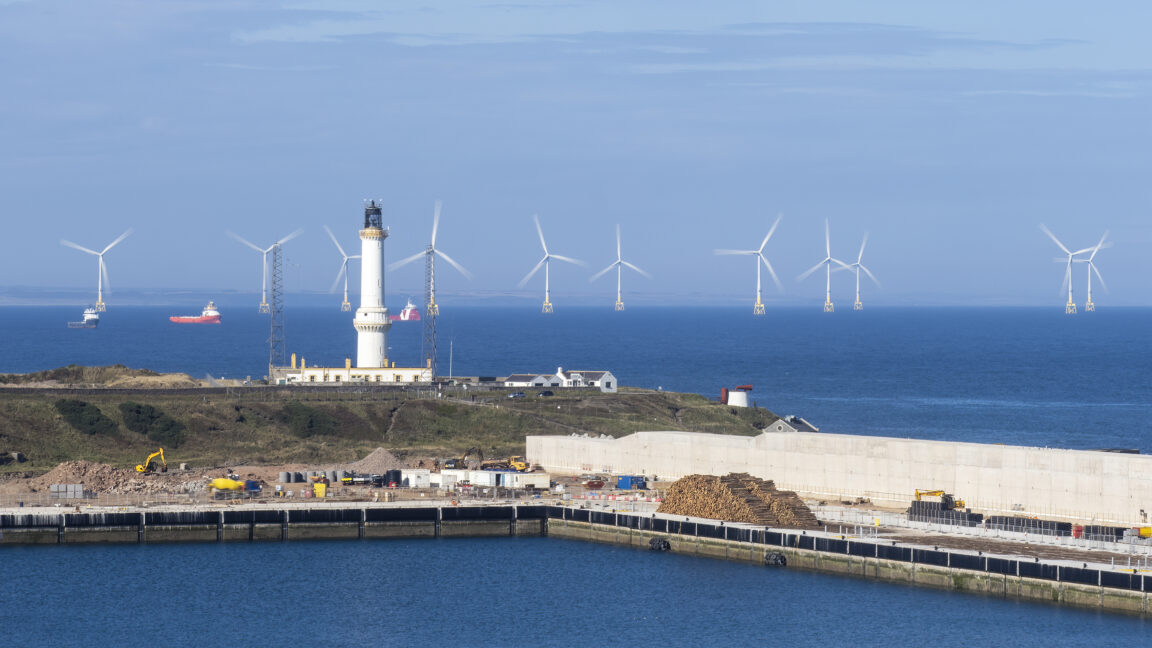arstechnica.com
Clean, but not fully green The UK got rid of coalwheres it going next? The UK has transitioned to a lower-emission grid. Now comes the hard part. Gordon Feller Feb 6, 2025 3:20 pm | 0 Credit: Gannet77 Credit: Gannet77 Story textSizeSmallStandardLargeWidth *StandardWideLinksStandardOrange* Subscribers only Learn moreWith the closure of its last coal-fired power plant, Ratcliffe-on-Soar, on September 30, 2024, the United Kingdom has taken a significant step toward its net-zero goals. Its no small feat to end the 142-year era of coal-powered electricity in the country that pioneered the Industrial Revolution. Yet the UK's journey away from coal has been remarkably swift, with coal generation plummeting from 40 percent of the electricity mix in 2012 to just two percent in 2019, and finally to zero in 2024.As of 2023, approximately half of UK electricity generation comes from zero-carbon sources, with natural gas serving as a transitional fuel. The UK aims to cut greenhouse gas emissions by 42 percent to 48 percent by 2027 and achieve net-zero by 2050. The government set a firm target to generate all of its electricity from renewable sources by 2040, emphasizing offshore wind and solar energy as the keys.What will things look like in the intervening years, which will lead us from today to net-zero? Everyones scenario, even when based in serious science, boils down to a guessing game. Yet some things are more certain than others, the most important of these factors being the ones that are on solid footing beneath all of the guesswork.Long-term goalsThe closure of all UK coal-fired power stations in 2024 marked a crucial milestone in the nation's decarbonization efforts. Coal was once the dominant source of electricity generation, but its contribution to greenhouse gas emissions made it a primary target for phase-out. The closure of these facilities has significantly reduced the UK's carbon footprint and paved the way for cleaner energy sources.With transition from coal, natural gas is set to play a crucial role as a "transition fuel." The governments British Energy Security Strategy argued that gas must continue to be an important part of the energy mix. It positioned gas as the "glue" that holds the electricity system together during the transition. Even the new Starmer government recognizes that, as the country progresses towards net-zero by 2050, the country may still use about a quarter of the gas it currently consumes.Natural gas emits approximately half as much carbon dioxide as coal when combusted, making it a cleaner alternative during the shift to renewable energy sources. In 2022, natural gas accounted for around 40 percent of the UKs electricity generation, while coal contributed less than two percent. This transition phase is deemed by the government to be essential as the country ramps up the capacity of renewable energy sources, particularly wind and solar power, to fill gaps left by the reduction of fossil fuels. The government aims to phase out natural gas thats not coupled with carbon capture by 2035, but in the interim, it serves as a crucial bridge, ensuring energy security while reducing overall emissions.But its role is definitely intended to be temporary; the UKs long-term energy goal is to reduce reliance on all fossil fuels (starting with imported supplies), pushing for a rapid transition to cleaner, domestic sources of energy.The governments program has five primary targets:Fully decarbonizing the power system (2035)Ending the sale of new petrol and diesel cars (2035)Achieving "Jet Zero" - net-zero UK aviation emissions (2050)Creating 30,000 hectares of new woodland per year (2025)Generating 50 percent of its total electricity from renewable sources by 2030Offshore wind energy has emerged as this strategys key component, with significant investments being made in new wind farms. Favorable North Sea wind conditions have immense potential. In recent years, a surge in offshore wind investment has translated into several large-scale developments in advanced planning stages or now under construction.The government has set a target to increase offshore wind capacity to 50 GW by 2030, up from around 10 GW currently. This initiative is supported by substantial financial commitments from both the public and private sectors. Recent investment announcements underscore the UK's commitment to this goal and the North Seas central role in it. In 2023, the government announced plans to invest $25 billion (20 billion British pounds) in carbon capture and offshore wind projects in the North Sea over the next two decades. This investment is expected to create up to 50,000 jobs and help position the UK as a leader in clean energy technologies.This was part of investments totaling over $166 million (160 million euros) to support the development of new offshore wind farms, which are expected to create thousands of jobs and stimulate local economies.In 2024, further investments were announced to support the expansion of offshore wind capacity. The government committed to holding annual auctions for new offshore wind projects to meet its goal of quadrupling offshore wind capacity by 2030. These investments are part of a broader strategy to leverage the UK's expertise in offshore industries and transition the North Sea from an oil and gas hub to a clean-energy powerhouse.Offshore windAs the UK progresses toward its net-zero target, it faces both challenges and opportunities. While significant progress has been made in decarbonizing the power sector, the national governments Climate Change Committee has noted that emissions reductions need to accelerate in other sectors, particularly agriculture, land use, and waste. However, with continued investment in renewable energy and supportive policies, the UK is positioning itself to become a leader in the global transition to a low-carbon economy.Looking ahead, 2025 promises to be a landmark year for the UKs green energy sector, with further investment announcements and projects in the pipeline.The Crown Estate, which manages the seabed around England, Wales, and Northern Ireland, has made significant strides in facilitating new leases for offshore wind development. In 2023, the Crown Estate Scotland announced the successful auction of seabed leases for new offshore wind projects, totaling a capacity of 5 gigawatts. And in 2024, the government plans to hold its next major leasing round, which could see the deployment of an additional 7 GW of offshore wind capacity.The UK government also approved plans for the Dogger Bank Wind Farm, which will be the world's largest offshore wind farm when completed. Located off the coast of Yorkshire, this massive project will ultimately generate enough electricity to power millions of homes. Dogger is a joint venture linking SSE Renewables, Equinor, and Vattenfall.This is in line with the governments broader strategy to enhance energy independence and resilience, particularly in light of the geopolitical uncertainties affecting global energy markets. The UKs commitment to renewable energy is not merely an environmental imperative; it is also an economic opportunity. By harnessing the vast potential of the North Sea, the UK aims not only to meet its net-zero targets but also to drive economic growth and job creation in the green energy sector, ensuring a sustainable future for generations to come.Recognizing winds importance, the UK government launched a 2024 consultation on plans to develop a new floating wind energy sector.The transition to a green economy more generally is projected to create up to 400,000 jobs by 2030 across various sectors, including manufacturing, installation, and maintenance of renewable energy technologies.Its growing offshore wind industry is expected to attract billions in investment, solidifying the UKs position as a leader in the global green energy market. The governments commitment to offshore wind development, underscored by substantial investments in 2023 and anticipated announcements for 2024, signals a robust path forward.Moving away from gasStill, the path ahead remains challenging, requiring a multifaceted approach that balances economic growth, energy security, and environmental sustainability.With the transition from coal, natural gas is now poised to play the central role as a bridge fuel. While natural gas emits fewer greenhouse gases than coal, it is still a fossil fuel and contributes to carbon emissions. However, in the short term, natural gas can help maintain energy security and provide a reliable source of electricity during periods of low renewable energy output. Additionally, natural gas can be used to produce hydrogen, potentially coupled with carbon capture, enabling a clean energy carrier that can be integrated into the existing energy infrastructure.To support the countrys core clean energy goals, the government is implementing specific initiatives, although the pace has been quite uneven. The UK Emissions Trading Scheme (ETS) is being strengthened to incentivize industrial decarbonization. The government has also committed to investing in key green industries alongside offshore wind: carbon capture, usage and storage (CCUS), and nuclear energy.Combined, these should allow the UK to limit its use of natural gas and capture the emissions associated with any remaining fossil fuel use.While both countries are relying heavily on wind power, the UKs energy-generation transformations are different from Germanys. While both governments push to make some progress on the path to net-zero carbon emissions, their approaches and timelines differ markedly.Energiewende, Germany's energy transition, is characterized by what some critics consider to be overly ambitious goals for achieving net greenhouse gas neutrality by 2045. Those critics think that the words dont come close to matching the required levels of either government or private sector financial commitment. Together with the Bundestag, the chancellor has set interim targets to reduce emissions by 65 percent by 2030 and 88 percent by 2040 (both compared to 1990 levels). Germany's energy mix is heavily reliant on renewables, with a goal of sourcing 80 percent of its electricity from renewable energy by 2030and achieving 100 percent by 2035.However, Germany has faced challenges due to continued reliance on coal and natural gas, which made it difficult to reach its emissions goals.The UK, however, appears to be ahead in terms of immediate reductions in coal use and the integration of renewables into its energy mix. Germany's path is more complex, as it balances its energy transition with energy security concerns, particularly in light of how Russias war affects gas supplies. 0 Comments











